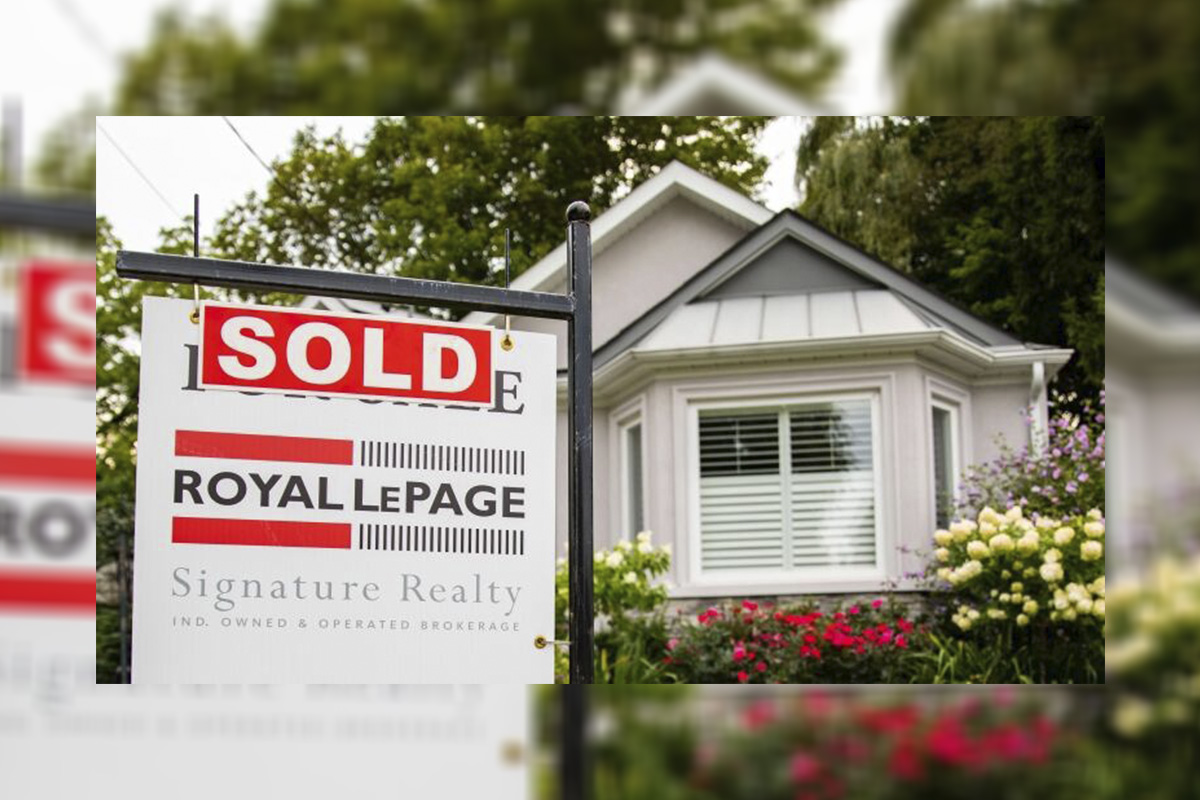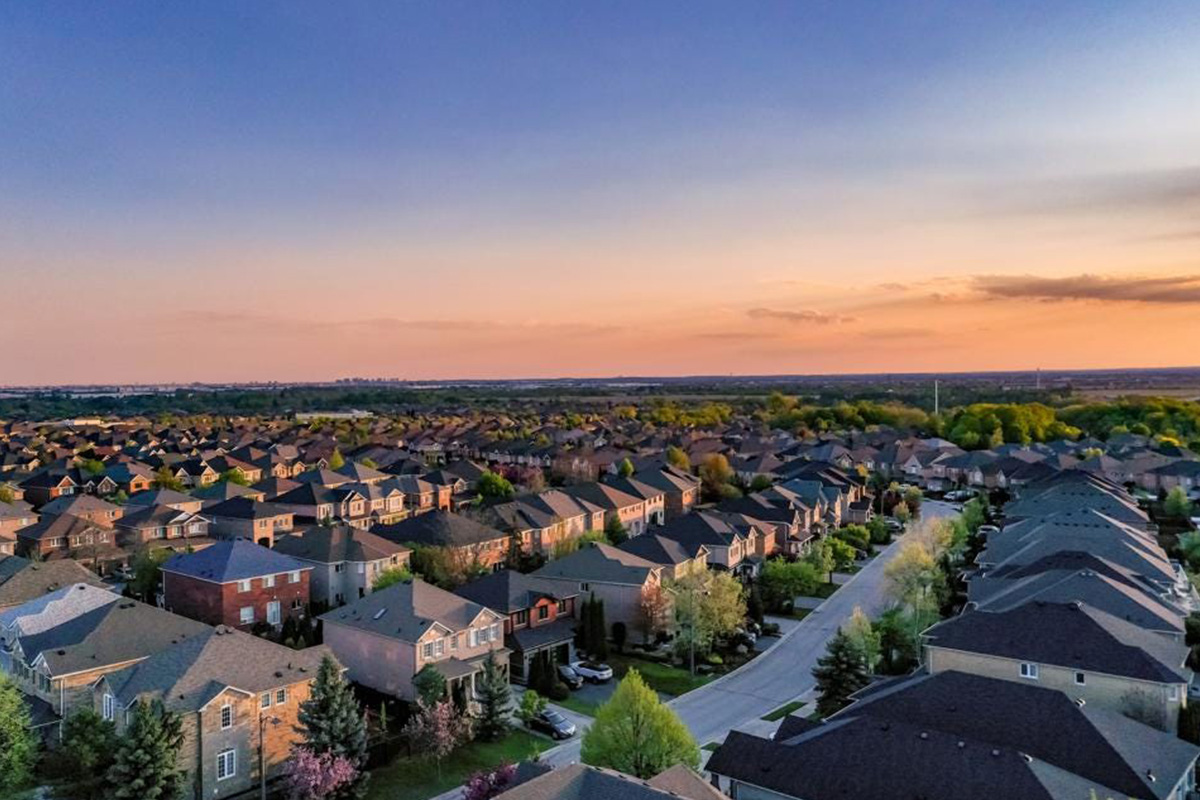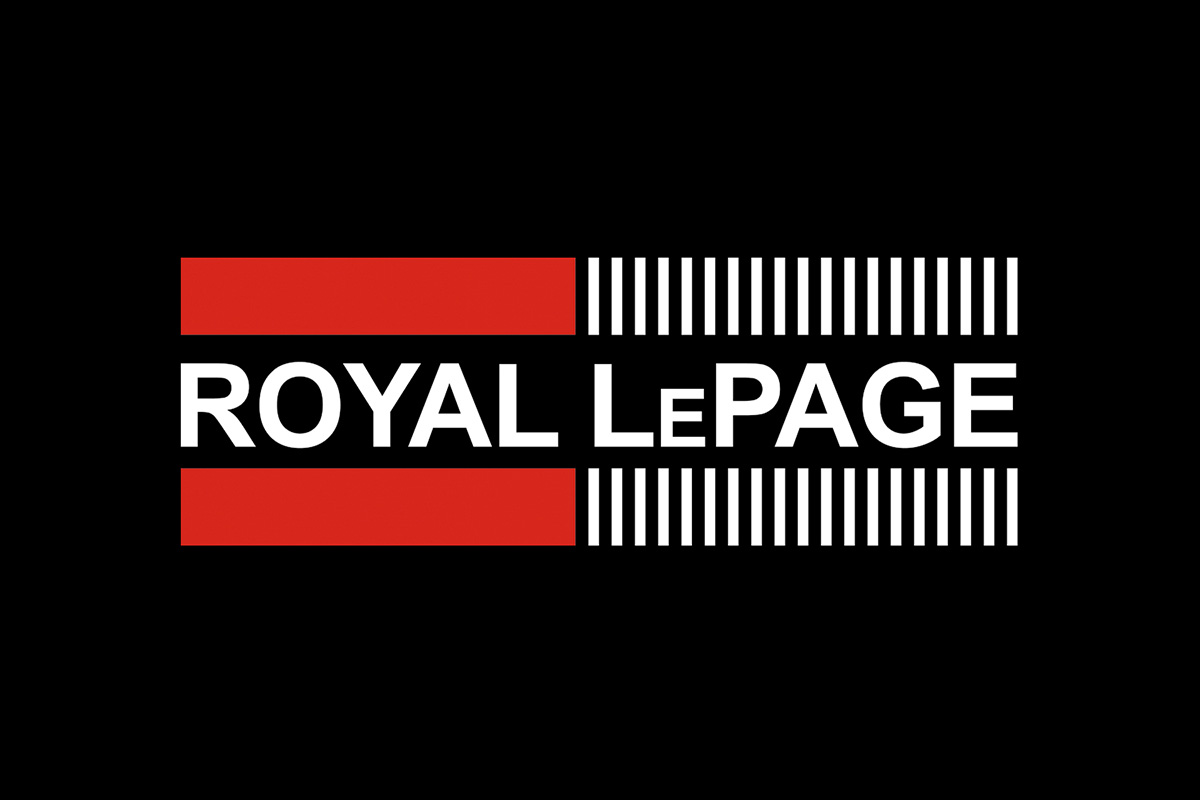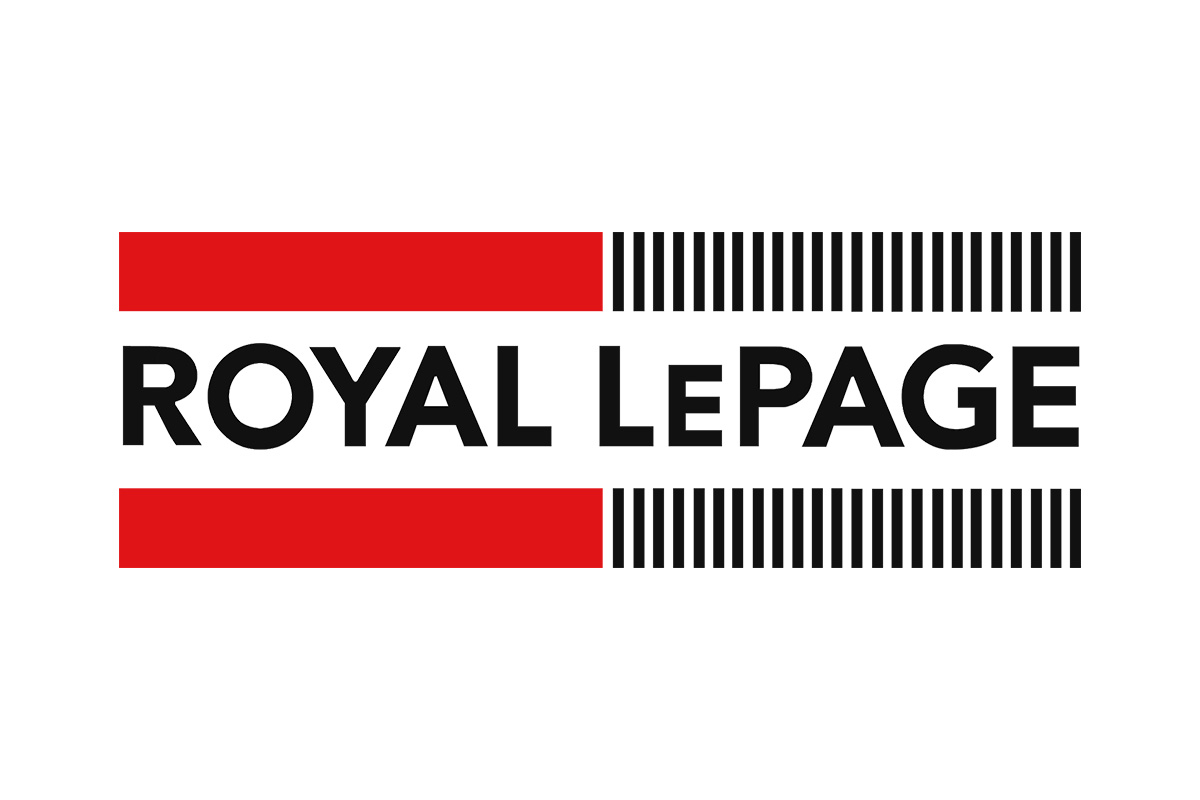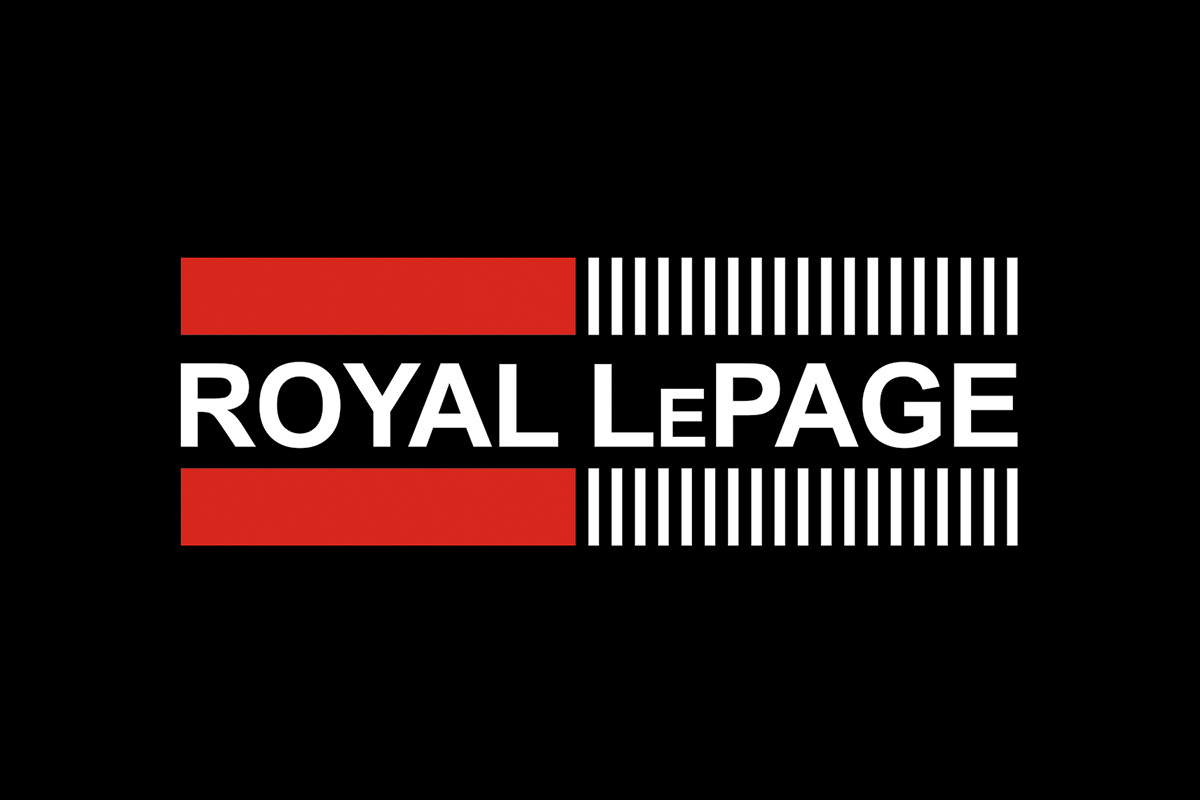According to the Royal LePage House Price Survey released today, the aggregate1 price of a home in Canada decreased modestly by 0.7 per cent year-over-year to $809,200 in the second quarter of 2023, indicating that nationally, the real estate market is close to the point where it will have recovered fully from 2022’s post-pandemic market correction. On a quarter-over-quarter basis, the aggregate price of a home in Canada rose 4.0 per cent in Q2. This was the second consecutive quarter to show positive growth following a rapid decline in prices over the last year as a result of the Bank of Canada’s aggressive interest rate hike campaign, which began in March of 2022.
|
_______________________________ |
|
1 Aggregate prices are calculated using a weighted average of the median values of all housing types collected. Data is provided by RPS Real Property Solutions and includes both resale and new build. |
“Almost all Canadian homeowners have seen the value of their properties appreciate handsomely over time. A few who purchased at the tail end of the pandemic-fueled real estate boom saw the value of their homes drop below purchase price during the subsequent market correction,” said Phil Soper, president and CEO of Royal LePage. “We are close to that pivotal point where people who purchased at the peak would break even if they sold today.
“The Bank of Canada’s prolonged series of interest rate hikes has changed where and how people live. It has pushed some buyer hopefuls to choose less expensive housing types or neighbourhoods. Others have chosen to relocate to more affordable markets across their province or across the country. And, some buyers have been pushed to the sidelines indefinitely,” Soper continued. “Economic uncertainty has caused some potential sellers to reevaluate their plans as well. The worry that they will be unable to find the move-up home they need in today’s tight market is a major concern. Further, there are those who secured fixed-rate mortgages at generational lows of two per cent or even less, who are understandably reluctant to wade back into a market with substantially higher borrowing costs. Fewer sellers mean fewer listings, which adds further pressure to our chronic shortage of inventory. Access to affordable housing in Canada will continue to be a major social issue.”
The Royal LePage National House Price Composite is compiled from proprietary property data nationally and in 62 of the nation’s largest real estate markets. When broken out by housing type, the national median price of a single-family detached home declined 2.0 per cent year-over-year to $841,900, while the median price of a condominium remained essentially flat, decreasing by just 0.4 per cent year-over-year to $586,900. On a quarter-over-quarter basis, the median price of a home in these property segments rose 4.1 and 2.7 per cent, respectively. Price data, which includes both resale and new build, is provided by Royal LePage’s sister company RPS Real Property Solutions, a leading Canadian real estate valuation company.
After two consecutive rate holds in March and April, the Bank of Canada announced last month that it was raising interest rates by another 25 basis points, before announcing a further quarter-point increase on Wednesday. The central bank’s overnight lending rate now sits at 5.0 per cent.2
|
______________________________ |
|
2 Bank of Canada, July 12, 2023, https://www.bankofcanada.ca/2023/07/fad-press-release-2023-07-12/ |
“Despite the central bank’s decision to start raising interest rates again, many buyers are still in the game. Demand remains strong, particularly among those who have secured a rate hold,” said Soper. “Buyers who are determined to make a purchase this year have accepted the reality of higher initial carrying costs, rationally surmising that rates are at or near peak and will become more affordable before long.”
Some buyers may have to adjust their expectations, widen their geographical search parameters or acquire a property that is smaller or more affordable in order to be successful.
Royal LePage’s 2023 Canadian First-time Homebuyer Survey found that 34 per cent of first-time buyers in Canada purchased a home in a more affordable region or neighbourhood than they had originally planned, and another 32 per cent purchased a smaller home, due to the impacts of current economic conditions, including the increased cost of living and lending rates.
“Contrary to some buyers who appear undeterred by the central bank’s decision to restart its rate increase campaign, many would-be sellers who do not have a critical need to move imminently have hit the pause button again, further exacerbating the inventory shortage,” added Soper.
With record-setting immigration targets in place for the next several years, and housing starts on the decline across the country,3 due to labour shortages and higher construction and borrowing costs, pressure on home prices continues to build.
|
________________________________ |
|
3 CMHC, Monthly Housing Starts and Other Construction Data Tables, https://www.cmhc-schl.gc.ca/professionals/housing-markets-data-and-research/housing-data/data-tables/housing-market-data/monthly-housing-starts-construction-data-tables |
Approximately one third (32%) of regions in the report posted year-over-year aggregate price gains in the second quarter, and only four regions reported quarterly declines.
“At this time last year, the market correction was in full-swing, and home prices had been declining from peak for several months. A theme I heard often was, ‘Why buy today, when I may be able to buy the same home for less tomorrow?’ As some doomsday forecasters predicted economic collapse and sharply rising unemployment, the pull-back in demand was understandably extensive, causing home prices to drop right across the country,” said Soper. “Yet the housing correction was short-lived. Across Canada, a return to pre-pandemic levels of demand, and the continued lack of supply, has been applying upward pressure on prices once again.”
Just as the market correction unfolded at various times in different regions across the country, so too has the recovery. The aggregate price of a home in Canada remains 5.6 per cent below the peak reached in the first quarter of last year.
The aggregate price of a home in the Greater Toronto Area, Canada’s largest and second-most expensive real estate market, posted a slight increase year-over-year in the second quarter, however remains 7.0 per cent below the region’s peak recorded in Q1 of last year. Similarly, the aggregate price of a home in Greater Vancouver, the country’s most expensive market, remains 6.9 per cent below the region’s peak, also recorded in Q1 of 2022. In the Greater Montreal Area, where home prices reached their highest level a little later, in Q2 of 2022, the aggregate price of a home sits just 2.4 per cent below the peak. Of the country’s three largest urban centres, the GMA experienced the shortest correction period. In the prairie provinces, prices also reached their peak in the second quarter of 2022, while some parts of Atlantic Canada reached their peak in Q2 and others in Q3 of last year.
The increased cost of borrowing is also having a significant impact on rental markets across the country. Faced with higher carrying costs, landlords are passing those expenses on to their tenants by raising rent prices. In addition, would-be buyers who were unable to qualify for lending or who have been priced out of the resale market are moving to, or remaining in, the rental market, which is adding additional pressure on an already low supply of available rental units. According to Statistics Canada’s latest Consumer Price Index, rent in May was up 5.7% over the same period last year.4
“In some cities, paying rent has become as expensive as making a monthly mortgage payment. The difference for many young people is the ability to acquire a down payment – whether through savings or with the financial assistance of parents or relatives,” said Soper. “It is essential that our governments increase support for the development of affordable, purpose-built rental buildings, especially in cities like Toronto and Vancouver, where it is becoming increasingly unaffordable for young people to establish themselves without financial help.”
|
______________________________ |
|
4 Statistics Canada, Consumer Price Index, Shelter, June 27, 2023, https://www150.statcan.gc.ca/t1/tbl1/en/tv.action?pid=1810000404&pickMembers%5B0%5D=1.2&cubeTimeFrame.startMonth=05&cubeTimeFrame.startYear=2023&referencePeriods=20230501%2C20230501 |
Royal LePage is forecasting that the aggregate price of a home in Canada will increase 8.5 per cent in the fourth quarter of 2023, compared to the same quarter last year. The previous forecast has been revised upward to reflect strong activity and price appreciation in the first half of the year.
“The Bank of Canada remains determined to bring inflation down to its target of less than three per cent. This has proven to be especially challenging at a time when the job market is so strong and Canadians continue to spend, partly due to a build-up of savings during the pandemic,” noted Soper.
“The Canadian real estate market has been in a steady state of recovery since the start of the year. While these additional interest rate hikes, and those potentially to come, will likely put a damper on activity and sales volumes, demand for housing remains very strong. We expect the rate of appreciation to moderate through the second half of 2023, causing home prices to level off or increase marginally.”
On a quarter-over-quarter basis, Royal LePage expects the national aggregate home price to remain essentially flat over the next six months, with only modest quarterly increases.
Royal LePage House Price Survey Chart: rlp.ca/house-prices-Q2-2023
Royal LePage Forecast Chart: rlp.ca/market-forecast-Q2-2023
Greater Toronto Area
The aggregate price of a home in the Greater Toronto Area increased 1.1 per cent year-over-year to $1,180,400 in the second quarter of 2023. On a quarterly basis, the aggregate price of a home in the GTA increased 5.4 per cent.
Broken out by housing type, the median price of a single-family detached home increased 0.7 per cent year-over-year to $1,447,600 in the second quarter of 2023, while the median price of a condominium decreased 1.0 per cent to $731,100 during the same period.
“The GTA housing market continues to see strong activity across all segments, despite new listings currently sitting below levels seen during the same period last year. Buyers in the market today are educated, determined and prepared to make a purchase, but they are facing tight competition once again,” said Karen Yolevski, chief operating officer, Royal LePage Real Estate Services Ltd. “The additional interest rate hikes are causing many would-be sellers to hesitate. Our strong job market and flexibility to work remotely means most people can afford to wait it out, causing further supply shortages and multiple-offer scenarios on almost every listing.”
In the city of Toronto, the aggregate price of a home decreased 1.9 per cent year-over-year to $1,222,000 in the second quarter of 2023. During the same period, the median price of a single-family detached home increased 4.9 per cent to $1,778,500, while the median price of a condominium decreased 1.9 per cent to $728,700.
As affordability and low supply continue to challenge buyers, the region’s rental market is also getting tighter. In the Greater Toronto Area, the average rental price of a one-bedroom apartment increased more than 15 per cent year-over-year in the first quarter of 2023.5
|
______________________________ |
|
5 TRREB, Rental Market Report, 2023 Q1, https://trreb.ca/files/market-stats/rental-reports/rental_report_Q1-2023.pdf |
“In Ontario, individual landlords own a healthy proportion of rental units, with little support from the government. Now that many of them are facing the impacts of rising interest rates and inflation, the already short supply of rental units is at risk, as some investors will choose, or be forced, to pull out of the market. This will create further scarcity of rental inventory, and put more upward pressure on prices,” said Yolevski.
Royal LePage is forecasting that the aggregate price of a home in the Greater Toronto Area will increase 11.0 per cent in the fourth quarter of 2023, compared to the same quarter last year. The previous forecast has been revised upward to reflect strong activity and price appreciation in the first half of the year.
Royal LePage House Price Survey Chart: rlp.ca/house-prices-Q2-2023
Royal LePage Forecast Chart: rlp.ca/market-forecast-Q2-2023
Greater Montreal Area
The aggregate price of a home in the Greater Montreal Area decreased 2.4 per cent year-over-year to $571,800 in the second quarter of 2023. On a quarterly basis, however, the aggregate price of a home in the GMA increased 3.7 per cent.
Broken out by housing type, the median price of a single-family detached home decreased 2.5 per cent year-over-year to $644,100 in the second quarter of 2023, while the median price of a condominium increased 2.0 per cent to $461,700 during the same period.
Dominic St-Pierre, vice-president and general manager of Royal LePage, Quebec Region, says that this week’s announcement by the Bank of Canada to increase its key lending rate by 25 basis points – the second consecutive rate hike since the central bank hit pause in March – is a warning to some buyers who were hoping to return to the market, that they will have to remain patient.
“The central bank raising its key rate tells us once more that it is committed to achieving the domestic inflation target of less than three per cent,” he notes. “With the housing shortage continuing, this announcement is likely to dampen the enthusiasm of many potential buyers, as we are seeing another dramatic surge in property prices following a short-lived period of correction. On the other hand, some buyers who have secured rate holds will rush to make a purchase before their rates expire. However, they will face increased competition for the little inventory available, as many would-be sellers who do not have an immediate need to move are holding off on listing their properties.”
In Montreal Centre, the aggregate price of a home decreased 1.2 per cent year-over-year to $694,000 in the second quarter of 2023. During the same period, the median price of a single-family detached home decreased 2.3 per cent to $1,088,500, while the median price of a condominium increased 5.3 per cent to $563,600.
Against the backdrop of sustained and faster-than-expected increases, Royal LePage is now forecasting that the aggregate price of a home in the Greater Montreal Area will increase 8.0 per cent in the fourth quarter of 2023 compared to the same period in 2022, to $587,844. On a quarter-over-quarter basis, this means that the aggregate home price will remain essentially flat over the next six months in the region, with only modest quarterly increases.
“This adjustment to our forecast is reflective of the market imbalance between supply and demand,” St-Pierre explains. “The number of active listings is up, but that inventory is being rapidly absorbed, and there are fewer new listings. Right now, the market is stuck in a vicious circle not unlike what we saw during the pandemic, and this is exacerbating the shortage of product available on the market. On the one hand, potential sellers are hesitant to list their homes, especially if they are benefiting from attractive mortgage rates, so as to safeguard their assets and avoid higher monthly payments. Those who decide to sell and also need to buy will find themselves competing with a mass of first-time buyers who have been waiting a long time for their chance to own a home.”
Royal LePage is forecasting that the aggregate price of a home in the Greater Montreal Area will increase 8.0 per cent in the fourth quarter of 2023, compared to the same quarter last year.
Royal LePage House Price Survey Chart: rlp.ca/house-prices-Q2-2023
Royal LePage Forecast Chart: rlp.ca/market-forecast-Q2-2023
Greater Vancouver
The aggregate price of a home in Greater Vancouver decreased 2.9 per cent year-over-year to $1,274,400 in the second quarter of 2023. On a quarterly basis, however, the aggregate price of a home in the region increased 4.1 per cent.
Broken out by housing type, the median price of a single-family detached home decreased 4.6 per cent year-over-year to $1,737,800 in the second quarter of 2023, while the median price of a condominium decreased 1.8 per cent to $769,400 during the same period.
“With a continued lack of inventory and buyers eager to transact, home prices increased over this past quarter. The market is returning to normal seasonal trends, although there is some trepidation about interest rates,” said Randy Ryalls, general manager, Royal LePage Sterling Realty. “Buyers who have secured lending at the current rate – and thus would not be immediately affected by the latest rate hike – want to make a purchase as soon as possible. But, if we see another interest rate hike or two, some would-be buyers will pull out of the market entirely. Some may be forced to sell their homes if they can’t afford a mortgage renewal at the higher rate; they may have to rent or move to a more affordable region.”
In the city of Vancouver, the aggregate price of a home decreased 1.6 per cent year-over-year to $1,434,600 in the second quarter of 2023. During the same period, the median price of a single-family detached home decreased 3.3 per cent to $2,561,800, while the median price of a condominium stayed essentially flat, increasing by 0.2 per cent to $821,600.
Ryalls noted that certain markets have maintained some strength, which is indicative of strong buyer interest, specifically for homes in the $1.3-to-$1.5-million range.
“Despite low supply, buyers are astute. People are getting less and less for their money. They are less inclined to compete, and homes that are not properly priced will sit on the market longer.”
Royal LePage is forecasting that the aggregate price of a home in Greater Vancouver will increase 7.0 per cent in the fourth quarter of 2023, compared to the same quarter last year. The previous forecast has been revised upward to reflect strong activity and price appreciation in the first half of the year.
Royal LePage House Price Survey Chart: rlp.ca/house-prices-Q2-2023
Royal LePage Forecast Chart: rlp.ca/market-forecast-Q2-2023
Ottawa
The aggregate price of a home in Ottawa decreased 4.8 per cent year-over-year to $761,600 in the second quarter of 2023. On a quarterly basis, however, the aggregate price of a home in the region increased 4.9 per cent.
Broken out by housing type, the median price of a single-family detached home decreased 5.8 per cent year-over-year to $876,400 in the second quarter of 2023, while the median price of a condominium decreased 4.0 per cent to $400,100 during the same period.
“With a race to buy in full swing, this summer could be stronger than normal, especially if buyers expect interest rates to continue rising,” said Jason Ralph, broker of record and president, Royal LePage Team Realty. “After lagging sales in the early part of the quarter picked up in June, it’s clear that buyers don’t want to miss out on current rates. Some sellers are also eager to transact if they need to move for employment purposes, although those who are not desperate to list are holding off.”
Ralph added that although the luxury market has not been as active as other segments, multiple-offer scenarios have returned to the highly-sought-after single-family detached market in Ottawa, particularly for homes priced between $650,000 and $850,000.
“Ottawa remains an increasingly attractive region to Canadians and newcomers, over more expensive alternatives. That affordability, however, hasn’t necessarily stretched to the rental market, where more attractive neighbourhoods have seen prices go up,” Ralph added. “Builders are working on purpose-built rentals, but that won’t help the market until next year.”
Royal LePage is forecasting that the aggregate price of a home in Ottawa will increase 7.0 per cent in the fourth quarter of 2023, compared to the same quarter last year. The previous forecast has been revised upward to reflect strong activity and price appreciation in the first half of the year.
Royal LePage House Price Survey Chart: rlp.ca/house-prices-Q2-2023
Royal LePage Forecast Chart: rlp.ca/market-forecast-Q2-2023
Calgary
The aggregate price of a home in Calgary increased 4.4 per cent year-over-year to $643,200 in the second quarter of 2023. On a quarterly basis, the aggregate price of a home in the region increased 4.3 per cent.
Broken out by housing type, the median price of a single-family detached home increased 4.0 per cent year-over-year to $736,100 in the second quarter of 2023, while the median price of a condominium increased 6.6 per cent to $252,000 during the same period.
“Despite an unexpected quarter-point hike to borrowing rates last month, and another one this week, buying and selling activity has not slowed down in Calgary. As is anticipated during the busy spring season, home sales ramped up, as did prices, as eager buyers jumped into the market,” said Corinne Lyall, broker and owner, Royal LePage Benchmark. “We don’t expect that potential future increases to interest rates will cool demand much – there are just too many buyers out there in search of a home for the amount of inventory that is available, which is keeping the market competitive. Demand is only amplified by the stream of buyers we continue to see relocating from other parts of the country to Calgary.”
Lyall noted that Calgary’s condominium market continues to see strong sales as an increasing number of buyers look for affordable options in the face of rising prices in the detached home segment. Supply has decreased materially compared to this time last year, to approximately one month’s worth of inventory; conditions that are fueling a seller’s market in every segment.
“We are not anticipating a drop in home prices this year, although another rate hike could put a damper on new inventory as cautious sellers hold off to see what happens next; a scenario that would further tighten supply-demand conditions,” said Lyall. “Higher rates will likely push more buyers into the condo market as their borrowing power diminishes. Although the timeline to build new homes has improved in Calgary since the pandemic, it is unlikely that developers will be able to create enough new product to alleviate supply challenges in the near future.”
Royal LePage is forecasting that the aggregate price of a home in Calgary will increase 8.0 per cent in the fourth quarter of 2023, compared to the same quarter last year. The previous forecast has been revised upward to reflect strong activity and price appreciation in the first half of the year.
Royal LePage House Price Survey Chart: rlp.ca/house-prices-Q2-2023
Royal LePage Forecast Chart: rlp.ca/market-forecast-Q2-2023
Edmonton
The aggregate price of a home in Edmonton decreased 5.4 per cent year-over-year to $434,400 in the second quarter of 2023. On a quarterly basis, however, the aggregate price of a home in the region increased modestly by 1.1 per cent.
Broken out by housing type, the median price of a single-family detached home decreased 5.5 per cent year-over-year to $471,400 in the second quarter of 2023, while the median price of a condominium decreased 8.7 per cent to $193,500 during the same period.
“This time last year, we witnessed a steep decline in market activity as the effects of higher borrowing rates kicked in. In 2023, the tides turned, and we experienced a much more normal start to the spring market,” said Tom Shearer, broker and owner, Royal LePage Noralta Real Estate. “Edmonton’s inventory remains low, and most new listings are only staying online for a short period of time compared to earlier this year. Well-priced listings are attracting multiple offers, as buyers are eager to transact before interest rates rise again. Inventory shortages have been compounded by hesitant sellers who are holding off on listing their properties, as they are under the impression that they won’t get as much money today as they would have a year ago.”
Shearer noted that homes at the lower price points of the market are facing the most competition in today’s high interest rate environment.
“Frustration among buyers has not peaked just yet. First-time buyers are willing to wait to get into the single-family home that they want versus settling for a more affordable housing type, such as a condominium,” noted Shearer. “With interest rate increases now smaller and more incremental, I don’t imagine any additional hikes this year will have a significant impact on home prices. 2023 will likely conclude with near-flat price growth.”
Royal LePage is forecasting that the aggregate price of a home in Edmonton will increase 4.0 per cent in the fourth quarter of 2023, compared to the same quarter last year. The previous forecast has been revised upward to reflect strong activity and price appreciation in the first half of the year.
Royal LePage House Price Survey Chart: rlp.ca/house-prices-Q2-2023
Royal LePage Forecast Chart: rlp.ca/market-forecast-Q2-2023
Halifax
The aggregate price of a home in Halifax decreased 5.8 per cent year-over-year to $495,400 in the second quarter of 2023. On a quarterly basis, however, the aggregate price of a home in the region increased 4.4 per cent.
Broken out by housing type, the median price of a single-family detached home decreased 6.2 per cent year-over-year to $559,700 in the second quarter of 2023, while the median price of a condominium decreased 6.0 per cent to $404,700 during the same period.
“After the recent wildfires ground the real estate market, as well as virtually every other industry, to a halt in May and early June, activity in Halifax has resumed,” said Matt Honsberger, broker and owner, Royal LePage Atlantic. “While the region saw brisk activity last month, comparable to 2019 levels, we expect the summer months will slow down, as per normal seasonal trends.”
Honsberger noted that a lack of inventory remains a constant challenge for buyers – those looking for a move-up property, as well as first-time buyers hoping to make a purchase at the entry level of the market.
“Compared to pre-pandemic times, supply levels are sitting at about one third of what would be considered normal for this time of year. New listings have slowed, due in part to rising interest rates causing uncertainty among consumers,” added Honsberger. “The lack of housing inventory is putting continued upward pressure on prices.”
Royal LePage is forecasting that the aggregate price of a home in Halifax will increase 7.0 per cent in the fourth quarter of 2023, compared to the same quarter last year. The previous forecast has been revised upward to reflect strong activity and price appreciation in the first half of the year.
Royal LePage House Price Survey Chart: rlp.ca/house-prices-Q2-2023
Royal LePage Forecast Chart: rlp.ca/market-forecast-Q2-2023
Winnipeg
The aggregate price of a home in Winnipeg decreased 1.5 per cent year-over-year to $386,900 in the second quarter of 2023. On a quarterly basis, however, the aggregate price of a home in the region increased 4.6 per cent.
Broken out by housing type, the median price of a single-family detached home decreased 1.5 per cent year-over-year to $426,700 in the second quarter of 2023, while the median price of a condominium remained flat, increasing 0.1 per cent to $253,100 during the same period.
“Following a slowdown in the second half of last year due to interest rate hikes, the spring market kicked off with a welcomed boost of activity this year. More homes are attracting multiple offers and selling over the asking price once again. While not as frenzied as at the height of the pandemic real estate boom, Winnipeg’s real estate market has returned to normal seasonal trends, following a slowdown last year,” said Michael Froese, broker and manager, Royal LePage Prime Real Estate. “I expect home prices will remain stable over the summer.”
While activity has picked up over the last several months, low inventory remains a constant challenge for buyers in Winnipeg. Additional interest rate hikes could result in a further strain on supply.
“Many sellers who were already on the fence about listing their property have been put off by the economic uncertainty caused by rising lending rates. Some have decided to wait to list their homes; others have taken their homes off the market temporarily,” said Froese. “Meanwhile, buyers who have already secured a lending rate are even more motivated to make a purchase.”
Froese added that demand remains strongest in the under-$500,000-segment. If supply weakens, there will be additional upward pressure on prices.
Royal LePage is forecasting that the aggregate price of a home in Winnipeg will increase 8.0 per cent in the fourth quarter of 2023, compared to the same quarter last year. The previous forecast has been revised upward to reflect strong activity and price appreciation in the first half of the year.
Royal LePage House Price Survey Chart: rlp.ca/house-prices-Q2-2023
Royal LePage Forecast Chart: rlp.ca/market-forecast-Q2-2023
Regina
The aggregate price of a home in Regina remained relatively flat in the second quarter of 2023, decreasing a modest 0.1 per cent year-over-year to $375,100. On a quarterly basis, the aggregate price of a home in the region increased 3.4 per cent.
Broken out by housing type, the median price of a single-family detached home decreased 1.1 per cent year-over-year to $404,700 in the second quarter of 2023, while the median price of a condominium increased 10.6 per cent to $226,300 during the same period.
“With renewed activity in the Regina real estate market, prices are rising and have made up for the losses incurred in 2022,” said Shaheen Zareh, sales representative, Royal LePage Regina Realty. “Well-priced homes in desirable neighbourhoods are being scooped up quickly and we’ve seen an increase in multiple-offer scenarios again. The condo market in particular, which has more available inventory than other segments, has been very active. As rental prices increase, many people who were contemplating a purchase have been pulled into the entry-level buyer market.”
Zareh noted that demand continues to outpace supply in the region, with strong activity from newcomers, as well as retirees from major markets like Toronto and Vancouver looking to cash in on the equity in their homes and buy in a more affordable market.
“Regina’s job market and local economy are strong, with lots of opportunity in the potash and canola industries. The city is an attractive and affordable location for Canadians and immigrants,” added Zareh. “We could see a rush of inventory hit the market next year if those who bought during the pandemic are unable to renew their mortgages at higher rates. But, without a significant boost in supply, upward pressure will continue to be placed on prices.”

